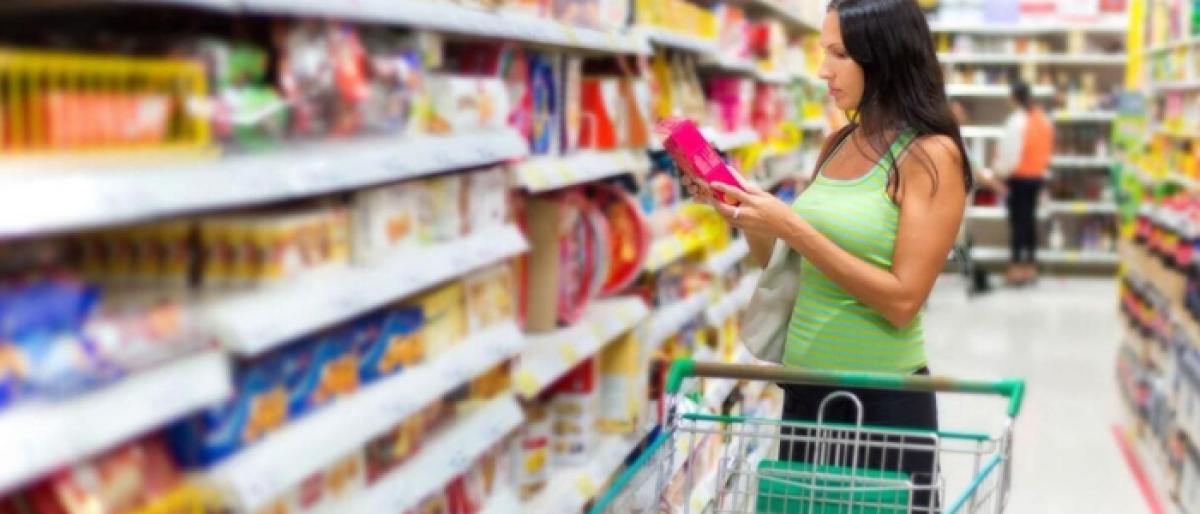Live
- IG inspects police stations at Chirala, Karamchedu
- Sandard Glass raises Rs40 cr in pre-IPO deal
- Options data flags rising volatility
- Contrarians in sight amid low volumes-led pull back rally
- ‘Ksheera Sagara Madhanam’ enthrals audience
- Nifty back below 200EMA/ 200DMAs
- US Navy shoots down own jets over Red Sea
- Nara Devansh sets world record in chess
- Team India cross their fingers
- 3 energy efficient projects to reduce power bills in AP
Just In

Most people love eating packaged foods, with their bright coloured packaging and easy access across all stores and supermarkets From the simple potato chips to an instant noodle, to your condiments and sauces, packaged foods feature heavily in our daily diets
Most people love eating packaged foods, with their bright coloured packaging and easy access across all stores and supermarkets. From the simple potato chips to an instant noodle, to your condiments and sauces, packaged foods feature heavily in our daily diets.
You snack on chips, make a meal out of the instant noodles and pile on the sauces and condiments on healthy foods like salads and sandwiches to enhance the taste. Most often we pick up these products from a grocery store without any heed to its contents, and this is where we falter.
When I was younger I used to love these packaged foods! However, after understanding the importance of nutrition, I strongly believe when food is made it should be from a plant and not in a plant. So fresh produce is the way to go, unfortunately, we have such a huge variety of ready to eat processed food with added vitamins and minerals basically “fortified foods”, which claim to be healthy.
If for some reason you have to eat packaged foods, often called functional foods, then you must understand the nutritive value and for that you have to read the labels carefully. Most of these products have additives in them and these are harmful chemicals that we ingest unknowingly and others through plain unawareness.
These foods are ticking time bombs on your plate, highly processed containing fats that are not good for you, white flour and white sugar. This cocktail is premixed with chemicals, pesticides, addictive’s and colours, destroying our health and making us brain dead.
Make yourself aware of what exactly goes into your body and whether the convenience provided by packaged foods can overlook its effects on our health. Normally, labels have nutrition facts on them.
Start by reading the serving size and servings per container to understand how much of the product you should consume.
Most packaged foods have valued the nutrients using “% Daily Value”, from this you should understand that any value which is five per cent or less is low and 20 per cent or more is high. By using this, you can easily determine whether a food contributes a lot to or a little of a particular nutrient.
You can even use this as a standardised measurement to compare it with different foods without doing further calculations.
An important item to check is the total calories per serving, as this will help you understand how many calories you will derive from the entire foods.
In Carbohydrates you need to check the calories from carbohydrates and the quality of carbohydrates that is, is it refined white flour or wholegrain flour?
Under Proteins you should check what their source is. From a plant or an animal or from a protein powder.
Check the Fat content and the quality of fat used. Whether it is refined, cold pressed, saturated fat, trans-fat or ghee.
A label also has the quantity of Sodium in it which tells you how much the salt content is in it and if it has been derived from natural salts or refined salts.
The value of Sugar in the product should also be checked and whether it is from natural sugars or refined white sugar.
Packaged foods often due to additives can cause irritability, mood swings, hormonal disorders, hyperactivity and may be carcinogenic. Excess salt can raise your blood pressure, cause hypertension, makes bones weak, obesity and excess white sugar can cause anxiety, diabetes, weaken eyesight, decreases concentration levels, osteoporosis and contributes towards Alzheimer disease.
So be smart and choose foods wisely

© 2024 Hyderabad Media House Limited/The Hans India. All rights reserved. Powered by hocalwire.com







